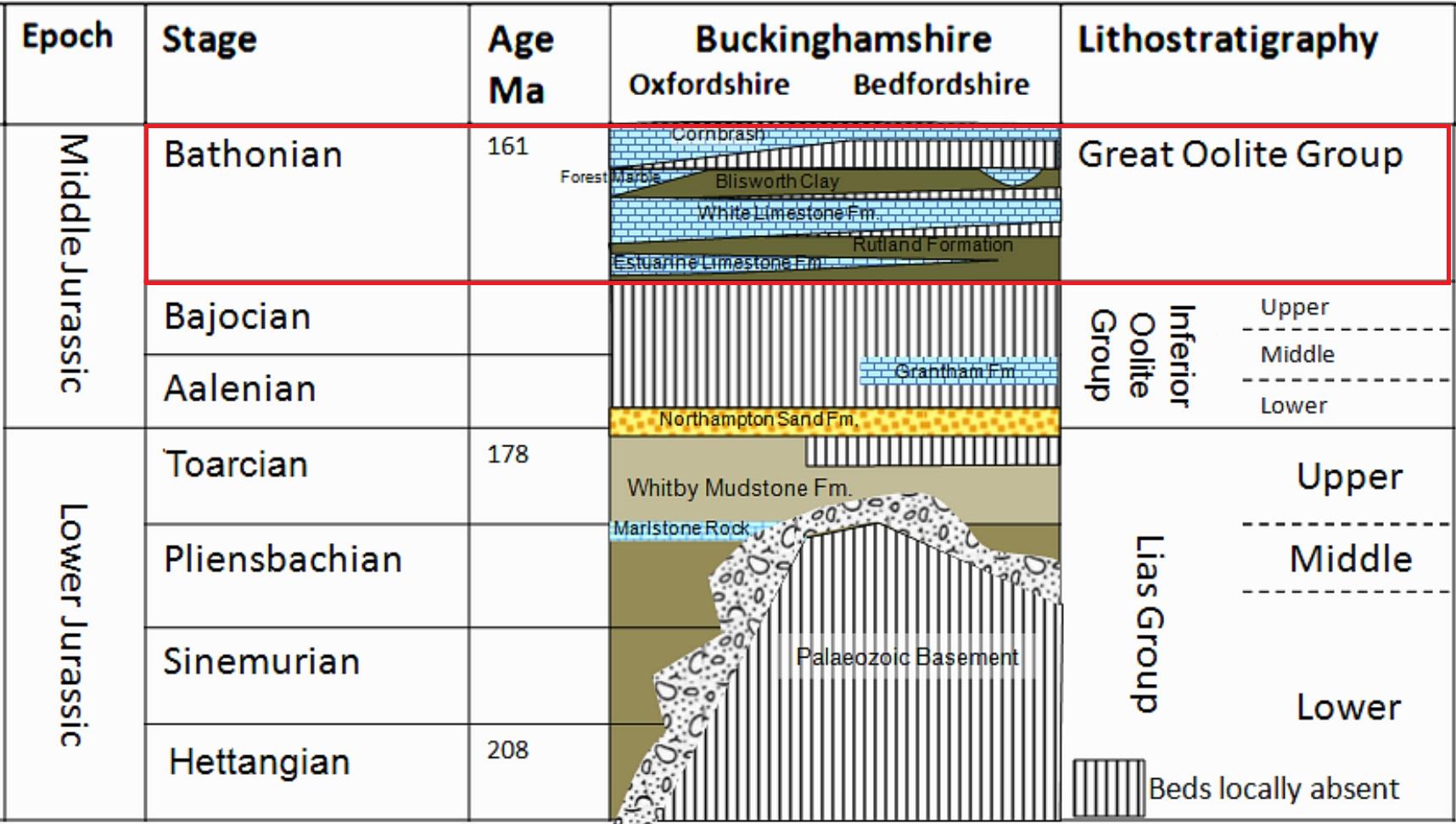|
Bucks Geology GroupGreat OoliteThe Great Oolite Group, Bathonian in age (175-164 million years) in Buckinghamshire is the equivalent of the Cotswold limestones, but in a less limestone-rich and thinner development. Correlation with the successions in Oxfordshire is relatively simple across the western part of Buckinghamshire, but further east, towards Northamptonshire, there is a lateral transition to less marine strata.The Great Oolite Group may be divided into a lower, mudstone-dominated succession (Hampen Marly Formation in the west to Rutland Formation in the east), a middle Limestone unit (White Limestone Formation to Blisworth Limestone Formation) and an upper, nearshore to marginally marine succession of limestones in the west (Forest Marble Formation) to tidal flat mudstone in the east (Blisworth Clay Formation). Finally, due to an abrupt global rise in sea-level, fully marine conditions were re-established and the unit is capped everywhere by shelly limestones of the COrnbrash Formation, under conditions which just persisted up into the succeeding Callovian Stage. 170 million years ago, Buckinghamshire enjoyed a tropical climate very similar to the Bahamas or Florida Keys of today. The rock types and the fossils strongly resemble those living in these tropical zones today. The limestone and the fossils it contains can be seen over north Buckinghamshire where this limestone has been used for building. Exposures are rare, but the Great Oolite may be seen in situ in Coombs Quarry, Thornborough, to which the public has free access. 


Stratigraphy of the Great Oolite in Buckinghamshire (highlighted). The Forest Marble and White Limestone Formations of Oxfordshire pass laterally westwards into the thinner, higher energy shelly limestone of the Blisworth Limestone and tidal flat mudstones of the Blisworth Clay Formation.
Fossils from the Great Oolite Group
Fossils from the Great Oolite Aphahoptyxis .
|


